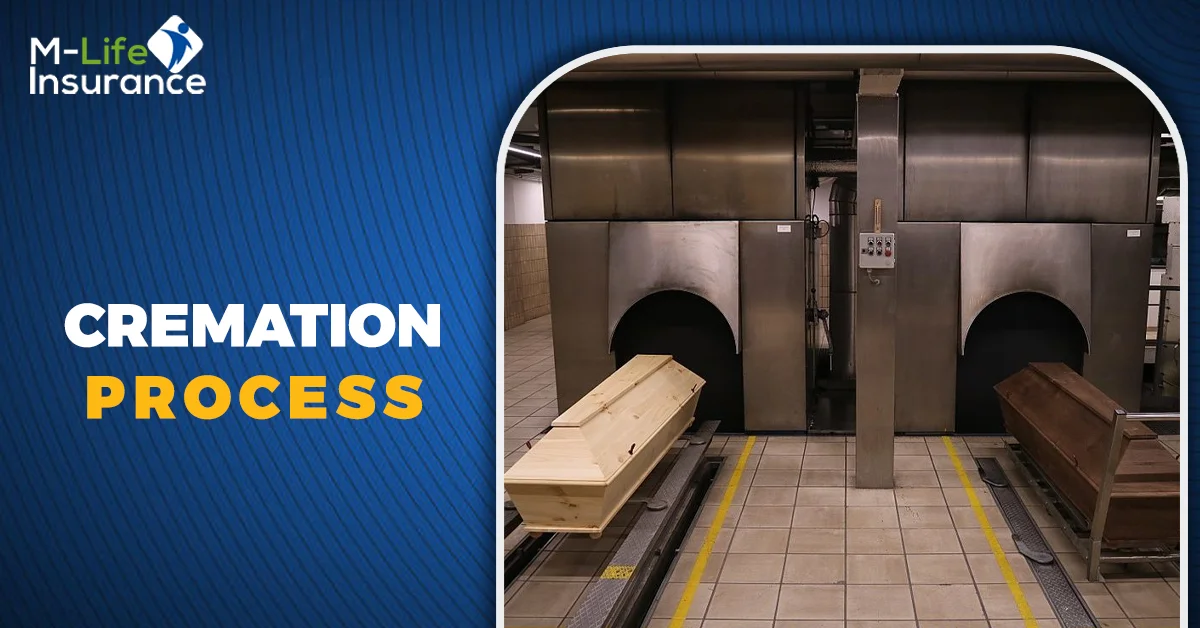Do you know the entire cremation process? From your authorization, the process to the destination? Cremation is a tradition that has existed for over three thousand years and carries some taboos that need to be broken and doubts that need to be cleared up.
The first traces of the practice of cremation began around the 10th century BC when the Greeks burned the bodies of dead soldiers over an open fire and sent their ashes back to their homeland. Despite this history, cremation was considered illegal at various times, mainly for religious reasons.
For the Jews, for example, the body cannot be destroyed, as the soul separates from it slowly during decomposition. As for Spiritists, it is necessary to wait at least 72 hours for cremation, enough time for the soul to detach itself from the body.

Urgent Insurance Queries?
Give us a ring at +1 (800) 661-8136 to speak with our licensed advisors right away!
How does a cremation process work?
- The cremation process starts when the person is still alive. Do not panic?? In relation to a common burial, the differences appear after the wake, when the coffin is not taken to the grave, but to a refrigerated room. In some crematoria, an elevator opens on the floor and descends with the body to the floor below, where the refrigerators are located.
- The so-called cold room works in the basement. In the crematorium in Sao Paulo, for example, the cold room is a room lined with tiles and thermally insulated, with metal shelves with a capacity for up to 4 coffins. The deceased spent 24 hours in the cold. During this period, the family or the police can request the body back, in the case of violent deaths such as murders.
- After a day in the fridge, the corpse goes into an oven with all the clothes still inside the coffin ?? only the metal handles are removed. Supported by a tray that prevents direct contact with fire, the coffin is subjected to a temperature of 1200 °C. This heat causes the wood in the coffin and the cells in the body to evaporate or volatilize, going straight from a solid to a gaseous state. The corpse starts to disappear.
- After up to two hours in the oven, only inorganic particles such as the calcium oxides that form bones can resist the heatwave. These remains are placed in the so-called mill, a kind of blender that grinds the bones with metal balls that shake from one side to the other.
- The mill runs for about 25 minutes. After this stage, the powdered ashes are placed in urns and delivered to the deceased’s family. At the end of the process, a 70-kilogram person is reduced to less than a kilogram of powder.
How long does a cremation process take?
A question that comes up regularly from families: Is cremation costs lower than a burial? On the internet, we find everything, and its opposite because, in reality, it is difficult to take a clear position on the subject. Indeed, it is the disbursements that will strongly impact the funeral costs related to burial or cremation. These same disbursements can vary from single to double, depending on the city, region, and chosen cremation services.
The cremation nevertheless seems less expensive than burial. However, depending on the destination of the funeral ashes, and in particular, in the event of the burial of the funeral urn, the funeral costs can increase significantly. It is the same for the burial in the case of the installation of a vault. To this, are added the costs related to the installation of a funeral monument, engraving, etc.
The casket can also greatly vary the funeral quote. But as a general rule, the cremation casket will always be cheaper than the burial one.
What is involved in cremation process?
As for burial, the cremation of a deceased must take place within a minimum of 24 hours and a maximum of 6 days from the date of death.
The authorizations necessary for the cremation of a deceased person are obtained at the town hall of the place of death or at the town hall of the place of rest of the body.
Cremation Process: Understanding How It Works
Before deciding on cremation, you should know the following: In order for a cremation to be carried out, written consent from the deceased must be available. If this is not available, the next of kin is responsible for the type of burial. In addition, if there is a cremation, a second examination of the corpse is carried out by forensic medical institutes.
The identity of the deceased is checked again, as well as the actual cause of death. For example, the doctor responsible checks whether there is any evidence of an unnatural or unexplained cause of death. If there are indications of unnatural death, the police authorities will be notified.
What is the process of cremating a body?
There must be no doubt about the identity of the deceased and the cause of death. As a rule, a second examination by a forensic doctor or public health officer is therefore carried out within 48 hours. Since coffins are compulsory, the corpse is cremated in a wooden coffin. The following requirements must be met in any case:
- Clear identification of the deceased
- A written declaration of intent from the deceased or the next of kin
- Verifiable entry in the death register
- Second inquest within 48 hours.

Joyce Espinoza, Expert Life Insurance Agent
Joyce Espinoza is a trusted life insurance agent at mLifeInsurance.com. She’s been in the insurance industry for over ten years, helping people, especially those with special health conditions to find the right coverage. At MLife Insurance, Joyce writes easy-to-understand articles that help readers make smart choices about life insurance. Previously, she worked directly with clients at Mlife Insurance, advising nearly 3,000 of them on life insurance options.


